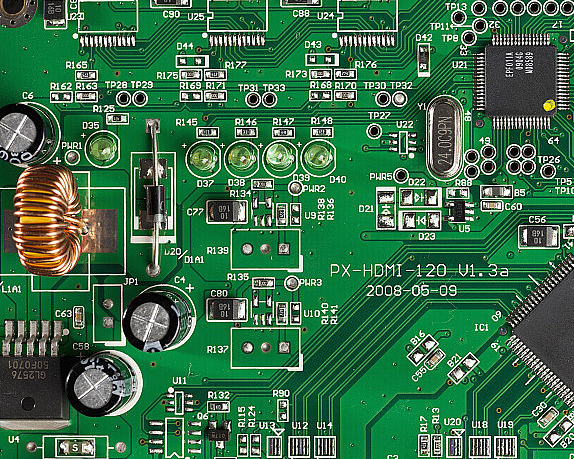An open circuit on a PCB (Printed Circuit Board) signifies a disruption in the continuity of a specific conductive pathway or connection, preventing the flow of current along the intended route. This interruption can severely disrupt the communication or data transmission between components within electronic devices, necessitating prompt repair to restore normal circuit board functionality.
In the realm of PCB manufacturing and maintenance, several factors contribute to the occurrence of open circuits:
- Soldering Defects: Poor soldering practices, including insufficient solder application, incomplete wetting of the copper pads, or solder-induced shorts (where solder bridges unintended connections), can result in open circuits. These defects often arise due to improper soldering techniques, inadequate temperature control, or contaminated solder materials.
- Physical and Chemical Damage: Mechanical damage, such as scratches, cracks, or bent leads, can disrupt the circuitry. Additionally, chemical corrosion from exposure to harsh environments or cleaning agents can degrade the conductivity of the traces, leading to disconnection.
- Component Failures: Faulty electronic components, such as resistors, capacitors, or integrated circuits, can cause PCB open circuits if they fail to function correctly. Component failures can be due to manufacturing defects, excessive heat, or electrical overstress.
- Design Flaws: Design flaws or errors in PCB layouts, such as improperly routed signal lines, incorrect via placement, or inadequate spacing between traces, can induce open circuits. These design issues can lead to signal interference, cross-talk, or even complete disconnection.
- Environmental Factors: External factors, such as dust accumulation, humid environments, or contaminants, can contribute to PCB open circuit failures. Dust and moisture can infiltrate the board, causing corrosion or short circuits, while contaminants can disrupt the conductivity of the traces.
- Thermal Stress: Operating PCBs under extreme temperatures can cause material expansion and contraction, leading to stress on the solder joints and traces. Over time, this stress can cause cracks or breaks in the traces, resulting in open circuits.
To effectively repair PCB open circuits, follow these professional steps:
- Fault Localization: Utilize advanced tools such as digital multimeters, oscilloscopes, or PCB testers to identify the open circuit location on the PCB. These tools can help pinpoint the exact disconnection point by measuring resistance, voltage, or current.
- Surface Preparation: Ensure the PCB surface is clean and free of dirt, oxides, or contaminants. Use appropriate cleaning methods, such as isopropyl alcohol or specialized PCB cleaning solutions, to remove any residue or corrosion.
- Soldering Repair: Reconnect the interrupted pathways using suitable soldering tools and techniques. Ensure that the solder joints are secure, have good wetting of the copper pads, and are free from shorts. Use high-quality solder and maintain proper temperature control to avoid damaging the components or traces.
- Wire Bridging: If soldering is ineffective or impossible due to damage to the trace or component leads, use fine wires (such as enameled copper wire) for bridging to reconnect severed circuits. Carefully strip the insulation from the ends of the wire and solder them to the adjacent pads or traces.
- Trace Repair: Repair damaged PCB traces using wires or special repair tapes. For trace repairs, use conductive adhesive tapes or epoxies designed for PCB repair. Ensure that the repair is secure and that the conductivity of the trace is restored.
- Post-Repair Verification: After completing the repair, verify the successful connection using testing equipment such as a continuity tester or an ohmmeter. This step ensures that the PCB open circuit issue has been resolved and that the board is functioning correctly.
Addressing PCB open circuits requires a thorough understanding of potential causes, effective repair strategies, and the use of advanced tools and techniques. By following these professional guidelines, technicians can ensure the reliability and functionality of electronic devices, minimizing downtime and maximizing productivity.




